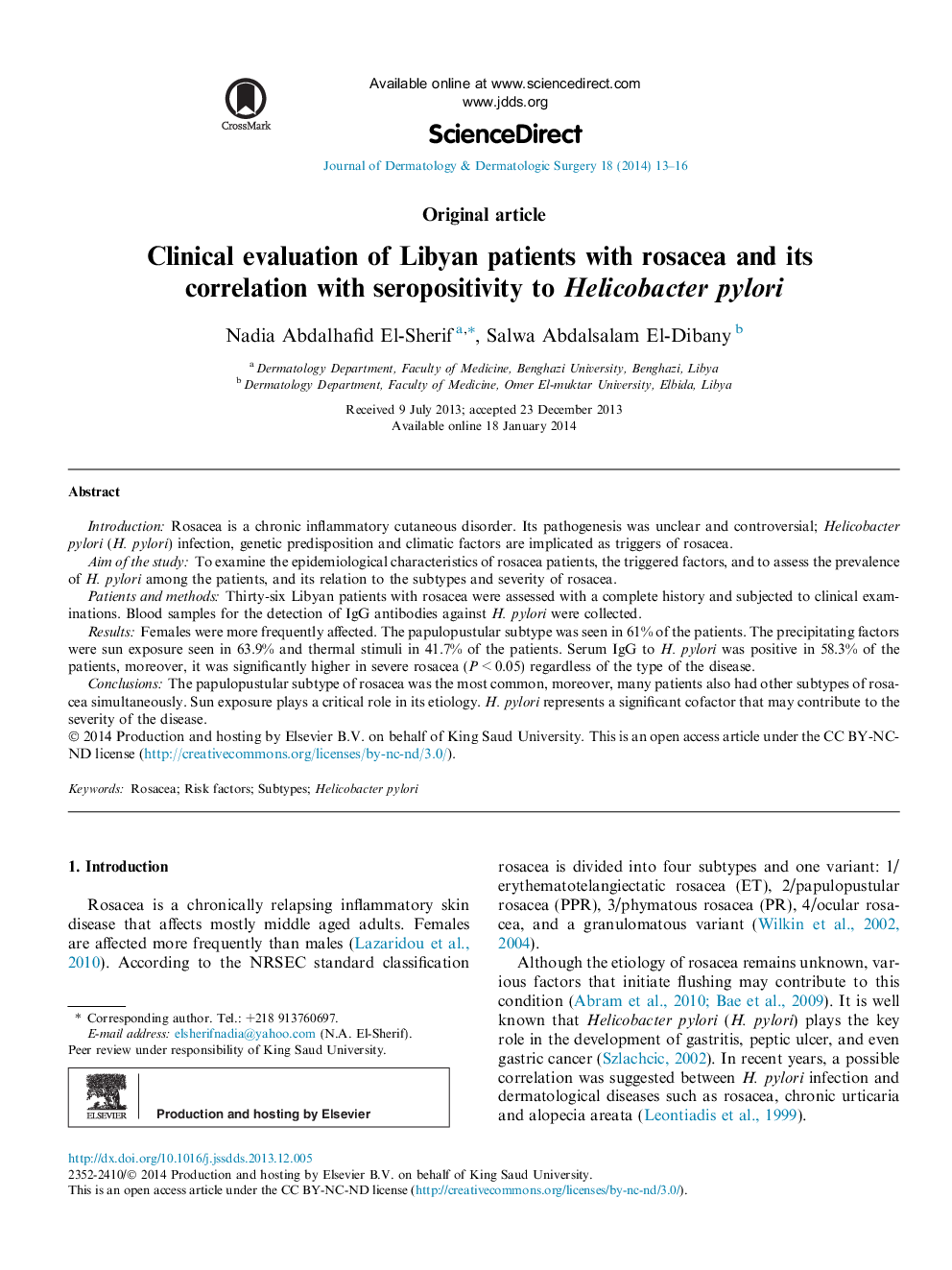| Article ID | Journal | Published Year | Pages | File Type |
|---|---|---|---|---|
| 3214735 | Journal of Dermatology & Dermatologic Surgery | 2014 | 4 Pages |
IntroductionRosacea is a chronic inflammatory cutaneous disorder. Its pathogenesis was unclear and controversial; Helicobacter pylori (H. pylori) infection, genetic predisposition and climatic factors are implicated as triggers of rosacea.Aim of the studyTo examine the epidemiological characteristics of rosacea patients, the triggered factors, and to assess the prevalence of H. pylori among the patients, and its relation to the subtypes and severity of rosacea.Patients and methodsThirty-six Libyan patients with rosacea were assessed with a complete history and subjected to clinical examinations. Blood samples for the detection of IgG antibodies against H. pylori were collected.ResultsFemales were more frequently affected. The papulopustular subtype was seen in 61% of the patients. The precipitating factors were sun exposure seen in 63.9% and thermal stimuli in 41.7% of the patients. Serum IgG to H. pylori was positive in 58.3% of the patients, moreover, it was significantly higher in severe rosacea (P < 0.05) regardless of the type of the disease.ConclusionsThe papulopustular subtype of rosacea was the most common, moreover, many patients also had other subtypes of rosacea simultaneously. Sun exposure plays a critical role in its etiology. H. pylori represents a significant cofactor that may contribute to the severity of the disease.
